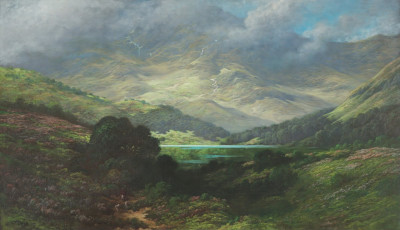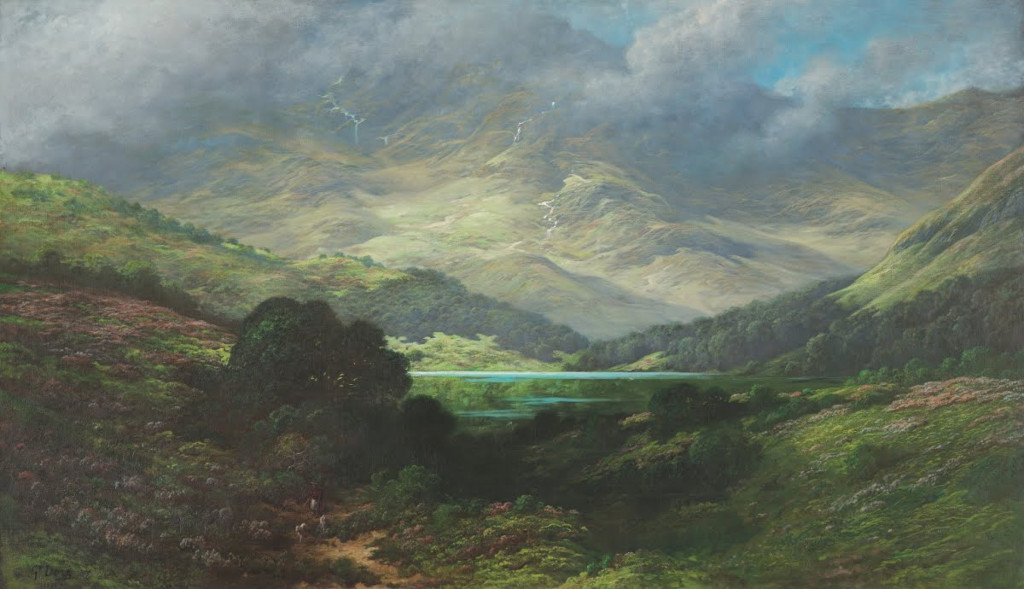Gustave Doré held a great passion for his paintings, and grew frustrated at his inability to gain academic praise for them to the same level as his illustrations. Nonetheless, his work in this genre remains worthy of note, including a series of oil paintings set in the Scottish Highlands.
This art form allowed him to essentially extend his drawings, adding colour and more subtle tones in a similar way to how his sculptures could bring about a third dimension. He had no formal training to speak of and so was influenced by other artists from around that time, and just previous. The Romanticist movement had already spread across many different fields with landscape painting being one of its most prominent categories, both in France and also the UK. Doré understood the cultures of both nations particularly well and so would have been entirely familiar with some of the more famous Romanticist landscape paintings. He covered several different genres within his oil paintings, with a series based in Scotland perhaps being the most memorable of all. Incredibly, he once proclaimed that his illustrations were merely a means to generating funds that allowed him to travel as well as paint, and so his interest in this medium was by no means fleeting, but genuine and with considerable commitment. Although he would never receive quite the acclaim that he was after, and remained seen by most as essentially an illustrator, there is still plenty of merit within his paintings and he also did manage to sell most of them during his own lifetime.
The Scottish Highlands, as shown here, was completed by Gustave Doré in 1875. The open landscape focuses our eyes on the reflection of light across the water in the centre of the piece. There are some small bushy trees in the foreground within a green and sloping environment. In the distance we can find many mountains, with a formation of cloud drifting past at the very top of the painting. A slither of blue sky is visible in the top right and the overall atmosphere is bright, a far cry from the dark and sometimes frightening artworks that he produced for his book illustrations. Many of those local to the Scottish Highlands may immediately recognise this landscape, and it continues to attract and delight visitors today, just as it has for many centuries. Doré himself was struck by the beauty of Scotland and would complete many paintings whilst staying here. One can tie this style of art to many of the great landscape painters, such as JMW Turner and also members of the Hudson River School, such as Albert Bierstadt and Frederic Edwin Church. Doré himself was a Romanticist is every way and took this movement across a breadth of mediums, far beyond just oil painting.
This painting resides today at the Toledo Museum of Art in the USA. The artist here was attempting to communicate the sheer scale of this region, and in how humans were incredibly small and insignificant in comparison to the mountains of Scotland. They were regarded as unspoilt, which was rare in the UK, even at that time. He would visit the region several times, producing many sketches on each visit, before returning home and completing paintings from the comfort of his own studio. Despite the popularity and fame of working en-plein-air, most landscape painters actually work from their own studios, particularly when using oils which requires much more equipment. He would later argue that these paintings of the Scottish Highlands were themselves impressions of his time there, rather than direct records of the scenes exactly as he saw them, and that would be in line with his work as a Romanticist artist. Many would in fact prefer this approach, particularly for those unable to visit themselves who want to imagine this dream-like environment in their own minds.





